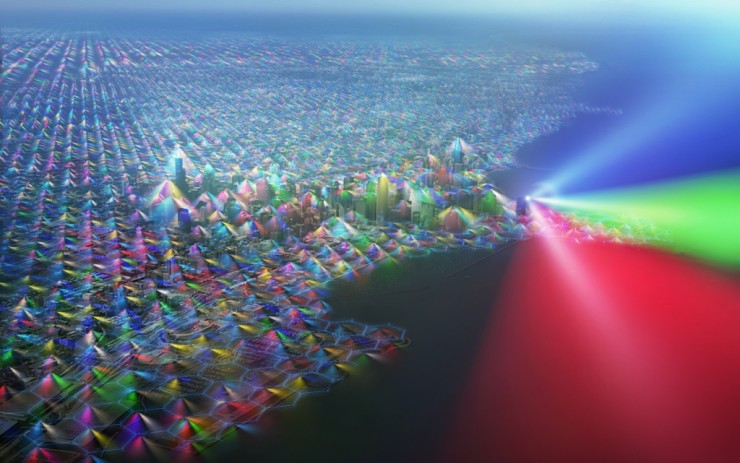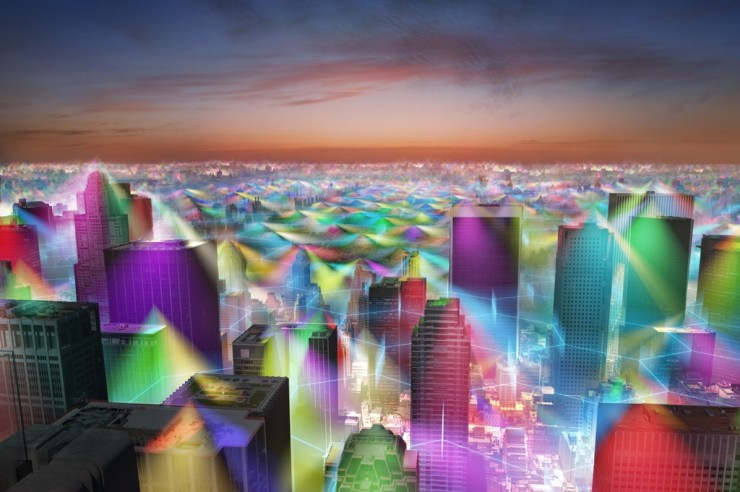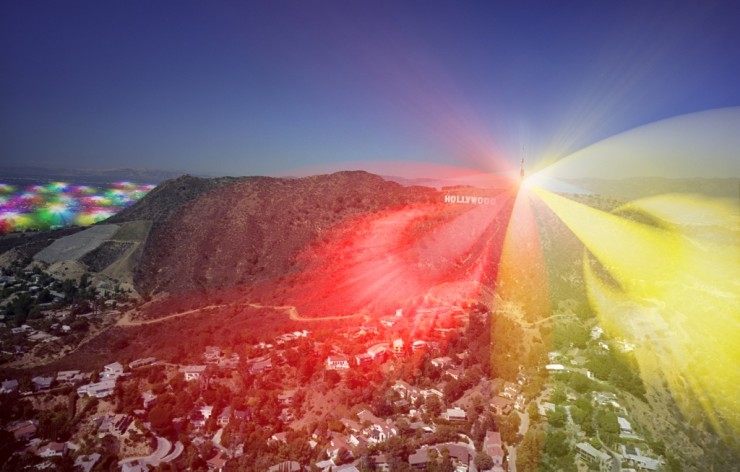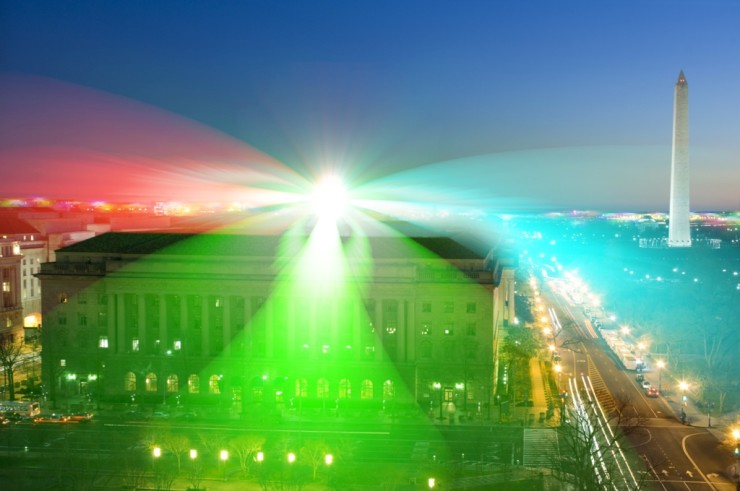
The above is a visualization by Nickolay Lamm that shows us what Chicago would look like if cellular signals were visible with the naked eye. It’s trippy and fascinating, and above all it isn’t just a fanciful interpretation, but is based on some solid understanding of how our cellular infrastructure works. “Danilo Erricolo, Professor of Electrical and Computer Engineering, University of Illinois at Chicago and Fran Harackiewicz, Professor of Electrical and Computer Engineering, Southern Illinois University Carbondale—who consulted on the psychedelic project—explain:”
A regular, hexagonal grid of cellular base-station sites is conceptualized for Chicago [above], with stations at the corners of the hexagons. The area within each sector antenna radiation pattern has different users being assigned different frequencies and their signals combine to form a single perceived color in that instant. Different channel combinations from sector to sector are indicated by different colors. The channel combinations shown are not static, but rather change rapidly in time as different users are assigned different channels. But, if you were to take a photo of these rapid changes, you’d likely see a wide array of colors as seen in the illustration. Near the downtown area more users are likely to be found and the hexagonal cells are smaller to serve approximately the same numbers of users found in larger cells elsewhere. Antenna signals extending beyond the original cells provide coverage over part of Lake Michigan.
We are surrounded by an always-on cacophony of electromagnetic radiation; it’s a blessing that our eyes are only able to see a small sliver of it. Visualizing it only serves as a fascinating reminder of this.
Hit the jump for a bunch more of these.

New York City Manhattan midtown aerial panorama view with skyscrapers and central park in the day.

Hollywood, with a monolithic, long-distance tower:

Base station at the at the Herbert C. Hoover Building in Washington D.C.
[ Nikolay's Page ]

